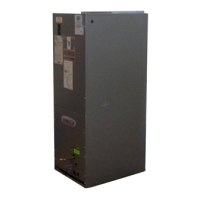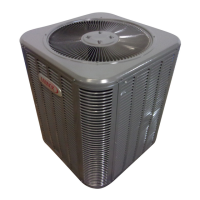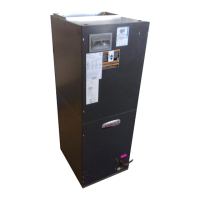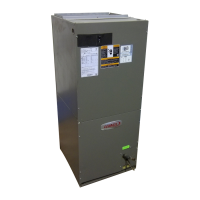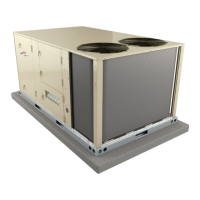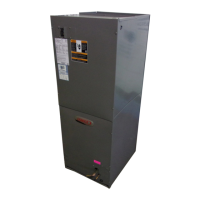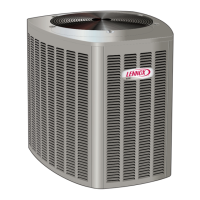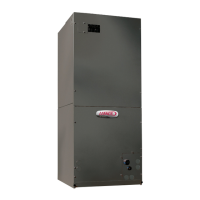Page 14
Table 5
10ACC Subcooling Values
(Fixed Orifice Systems Only)
OUTDOOR
LIQUID SUBCOOLING [+ 1F (.6C)]
TEMP.
F (C)
18 24 30 36 42 48 60
65
(18)
14
(8)
10
(5.6)
16
(9)
17
(9.5)
17
(9.5)
15
(8.3)
14
(8)
70
(21)
13
(7)
9
(5)
15
(8.3)
17
(9.5)
17
(9.5)
14
(8)
15
(8.3)
75
(24)
14
(8)
8
(4.5)
15
(8.3)
16
(9)
16
(9)
13
(7)
15
(8.3)
80
(27)
13
(7)
7
(3.9)
15
(8.3)
15
(8.3)
15
(8.3)
13
(7)
14
(8)
85
(29)
13
(7)
6
(3.3)
14
(8)
14
(8)
14
(8)
12
(6.7)
14
(8)
90
(32)
12
(6.7)
5
(2.8)
14
(8)
14
(8)
14
(8)
12
(6.7)
13
(7)
95
(35)
11
(6)
4
(2.2)
13
(7)
12
(6.7)
14
(8)
12
(6.7)
13
(7)
100
(38)
11
(6)
4
(2.2)
13
(7)
11
(6)
13
(7)
11
(6)
12
(6.7)
105
(41)
10
(5.6)
3
(1.7)
12
(6.7)
10
(5.6)
12
(6.7)
10
(5.6)
12
(6.7)
110
(43)
9
(5)
3
(1.7)
11
(6)
9
(5)
11
(6)
9
(5)
11
(6)
115
(45)
8
(4.5)
2
(1.1)
11
(6)
8
(4.5)
11
(6)
8
(4.5)
10
(5.6)
Charging Using Normal Operating Pressures
and the Approach Method
TXV Systems – Outdoor Temp. >
65F (18C)
The following procedure is intended as a general guide and
is for use on expansion valve systems only. For best results,
indoor temperature should be 70°F (21°C) to 80°F (26°C).
Monitor system pressures while charging.
1 − Record outdoor ambient temperature using a digital
thermometer.
2 − Attach high pressure gauge set and operate unit for
several minutes to allow system pressures to stabilize.
3 − Compare stabilized pressures with those provided in
table 7, Normal Operating Pressures." Minor varia-
tions in these pressures may be expected due to differ-
ences in installations. Significant differences could
mean that the system is not properly charged or that a
problem exists with some component in the system.
Pressures higher than those listed indicate that the
system is overcharged. Pressures lower than those
listed indicate that the system is undercharged. Verify
adjusted charge using the approach method.
4 − Use the same digital thermometer you used to check
the outdoor ambient temperature to check the liquid
line temperature. The difference between the ambient
and liquid temperatures should match values given in
table 6. Loss of charge results in low capacity and effi-
ciency.
5 − If the values don’t agree with the those in table 6, add
refrigerant to lower the approach temperature, or re-
cover refrigerant from the system to increase the ap-
proach temperature.
Table 6
Approach Method
Model No.
Approach Temperature
Liquid Line − Outdoor Ambient F (C)
10ACC−018 9 (5)
10ACC−024 18 (10)
10ACC−030 22 (12)
10ACC−036 11 (6)
10ACC−042 13 (7)
10ACC−048 8 (4.5)
10ACC−060 13 (7)
NOTE − For best results, use the same digital thermometer to check both
outdoor ambient and liquid temperatures.
IMPORTANT
Use table 7 to perform maintenance checks. Table 7
is not a procedure for charging the system. Minor
variations in these pressures may be due to differ-
ences in installations. Significant deviations could
mean that the system is not properly charged or that
a problem exists with some component in the system.
See table 7.

